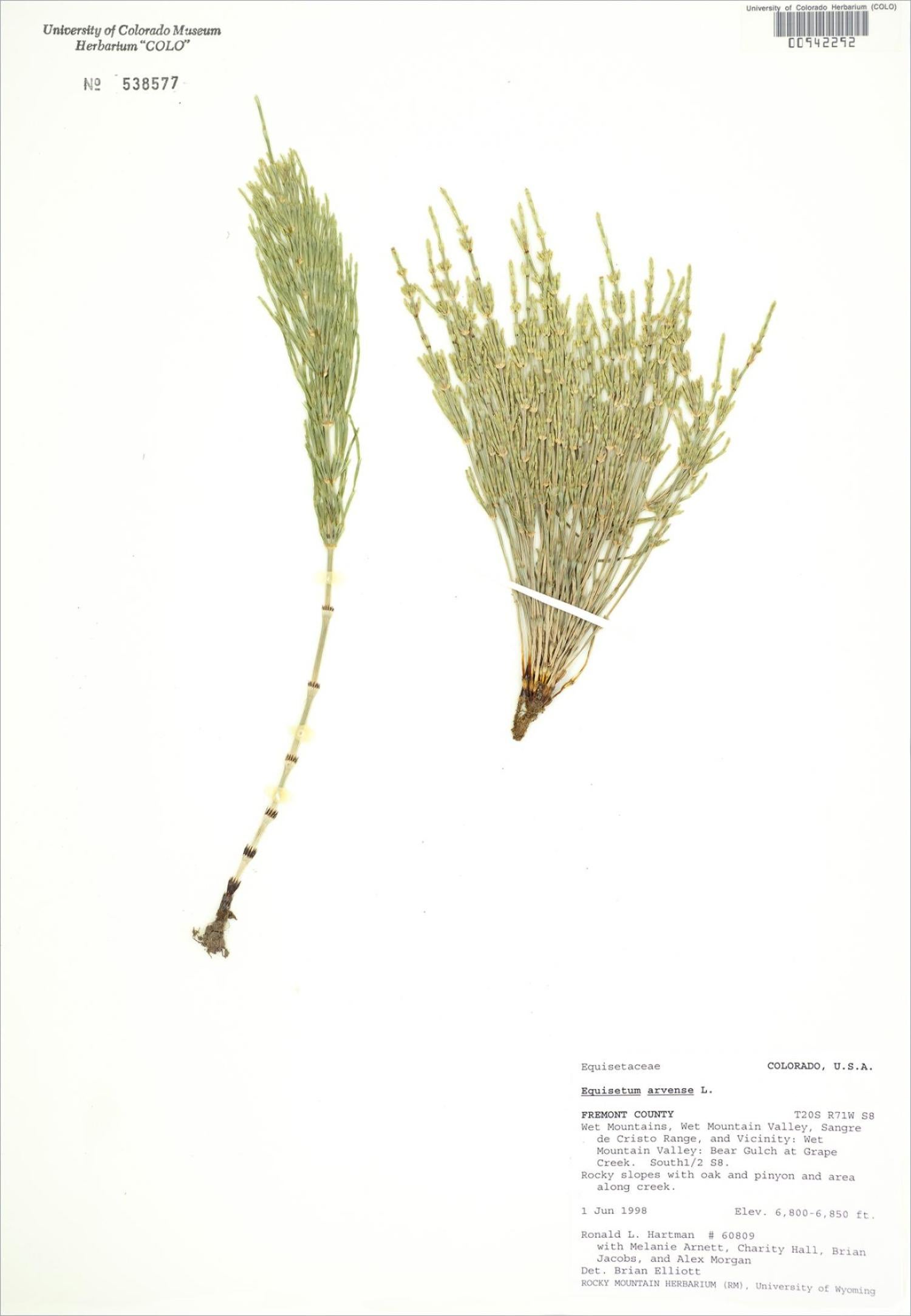Field Horsetail
Field Horsetail (Equisetum arvense) is a cosmopolitan fern widespread throughout the Northern Hemisphere, found in moist sites along roadsides and riverbanks as well as in fields, marshes, pastures, and tundra. Today’s horsetails are ‘living fossils'—miniature descendants of an ancient plant lineage that once played a dominant role in the understory of Paleozoic forests. Some of those equiseta were large trees, and their fossils are abundant in coal deposits from the Carboniferous Period, or the Age of Ferns.
Ferns and their allies, like club mosses and horsetails, have traditionally been grouped together as pteridophytes, a group of vascular plants that reproduce by spores rather than seeds. The spores of ferns are produced in tiny sacs, usually grouped in clusters called sori, and typically found on the underside of the leaf. As a primordial lineage reaching back 400 million years, to a time when planet earth had just begun to support terrestrial life, ferns maintain this early strategy of sexual reproduction.
There are 15-25 known species of Equisetopsida. They share a unique growth form that distinguishses them from other ferns. Their stems look like they are made up of a combination of smaller segments stacked on top of one another. They are hollow and reinforced with silica, making them strong (butt also rendering them toxic to their namesake—pun intended).
Common name: Field Horsetail
Scientific name: Equisetum arvense
Location collected: Fremont County, CO
Date collected: 1 June, 1998
Collectors: Ronald Hartman, M. Arnett, C. Hall, B. Jacobs, A. Morgan


